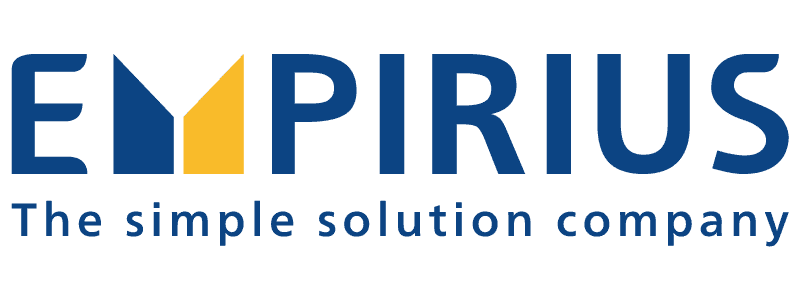Overview Instead of Tunnel Vision


No matter how you look at it, without a well-functioning and constantly optimized SAP basis, SAP system operations are on a shaky footing. What's more, the entire SAP deployment cannot take effect in the way that SAP user companies imagine or expect. The tasks and activities that SAP Basis has to perform are known to be diverse and complex. And they are also constantly changing. Automation software has been making a significant contribution to the profitable support of SAP Basis for over 20 years.
Looking at this period of time, it can be seen that SAP Basis automation solutions have continuously developed in line with demand. The beginning was characterized by script programs, with instructions provided by SAP. Script programs then led to individual function-extending solutions or tools developed for dedicated SAP Basis tasks/activities. For example, for the automated creation of SAP system copies. The market for SAP Basis automation solutions then took off, so to speak, and a number of SAP third-party providers made sophisticated products available for various SAP Basis work requirements. These included complete SAP Basis automation solutions that followed the suite concept with a large number of apps.
Future of SAP Lama?
Not forgetting, of course, that SAP has always given a certain amount of weight or attention to SAP Basis. Sometimes more, sometimes less. These include SAP Solution Manager, SAP Landscape Management (Lama) and its predecessors, and SAP ME today. In particular, SAP user companies have used SAP Solution Manager and SAP Lama in conjunction with third-party products to make their SAP system operations SAP Basis weatherproof, so to speak. However, the end-of-life of the SAP Business Suite at the end of 2027 will bring changes in the SAP Basis area. Quite a few in the SAP community are asking themselves in this context: "What will happen to SAP Lama or what does the SAP Lama future of the solution look like; is there a successor?" But that is a separate story.
Back to the market for SAP Basis automation solutions. Specifically to a topic that has been increasingly discussed for some time, namely: "the use of individual tools and or the use of an SAP Basis automation suite", which covers all important SAP Basis tasks and activities by means of apps and is able to act as a "central point of management". In the application environment, the best-of-breed vs. suite approach with integration of individual application components has actually always existed. In the SAP Basis or SAP infrastructure environment, this "hard" comparison can also be made in certain respects. However, a kind of exclusivism - with a focus on either tools or a suite - does not help users here. In other words, the needs or requirements of SAP Basis teams are not supported or not supported in line with requirements.
Tools: Yes, but ...
If we look at the various tools, we can see the following: Firstly, SAP users use a number of agnostic tools for SAP Basis automation. However, these are only partially or not sufficiently suitable for SAP use with its SAP-specific requirements. Other tools, offered or supplied by SAP component suppliers, have their own products in particular in the
They offer a certain level of limited SAP Basis automation support. Hardware manufacturers for their servers, database providers for their DBMS, OS suppliers for their operating systems, storage manufacturers for their storage systems or networking specialists for their network environments. This means that many tools may be used in parallel, and each tool has its own defined guard rails, so to speak, and therefore generally only covers one specific SAP Basis sub-area, for example a
OS upgrade/update. The result in particular: several media discontinuities with a -separate solution orientation and a kind of tunnel vision.
These questions alone lead to the following implementations for companies: Realization with one and the same SAP Basis automation suite not only an SAP Hana update, but also an OS update and an SAP kernel update - in addition to perhaps the handling of SAP Security Notes (SAP SecNotes) or SAP certificate management. And all with a standardized smart solution mimic. Examples from practice can be cited. The "mimic" aspect is particularly important when it comes to the use of tools and/or suites. This is because it also determines which increases in efficiency or which economic benefits (time/personnel/cost savings) the use of automation software will bring. This refers to both the GUI or web UI as well as the many functions, processes or workflows in the apps that are hidden behind a web UI. Ultimately, this is how the implemented "intellectual property" or the efficient solution capability of automation software comes into play.
Nevertheless, as an SAP user company, it can make sense to use individual automation tools - including agnostic tools - for certain tasks, for example Ansible from Red Hat or monitoring tools, due to the individual circumstances.
Suites integrate tools
Compared to tools, suites or, in the modern language register, platforms in the SAP Basis automation environment take into account the holistic concept of IT provenance "enterprise management" or "IT system management" per se. Of course, they take SAP-specific requirements into account. At the same time, they are able to effectively support SAP Basis or SAP infrastructure teams as a central point of management instrument. With the management requirements of planning, implementation, control/management and monitoring. From a central location. This also allows SAP Basis maintenance management to be "rethought". For example, SAP Basis maintenance is also based on the following questions: How can downtimes be minimized for maintenance tasks, for example in 24×7 SAP system operation? Or: How can SAP Basis personnel deployment (e.g. at weekends) be reduced?
Uniform solution mimicry
Anyone who frequently works with an SAP Basis automation suite with a standardized mimic can handle it with ease and thus use the software better. You simply know where to click what, even for demanding tasks. For example, when creating an SAP system copy, performing an SAP kernel update, an SAP Hana update or an OS update. With a single tool, such as for an OS update, you have to deal with a proprietary user interface or a different process sequence. With another tool, such as for a Hana update, you work with a differently designed WebGUI. It may be necessary to familiarize yourself with a tool that you have not used for some time. This takes time, effort and costs. Many tools always mean additional costs compared to a suite. Training costs, license or maintenance costs, for example.
The bottom line: an SAP automation suite should be able to integrate tools. Or provide mechanisms to integrate tools easily and at any time. "Tools or a suite" - i.e. an either-or - is not the way to go, but a well-considered both-and.
To the partner entry:





